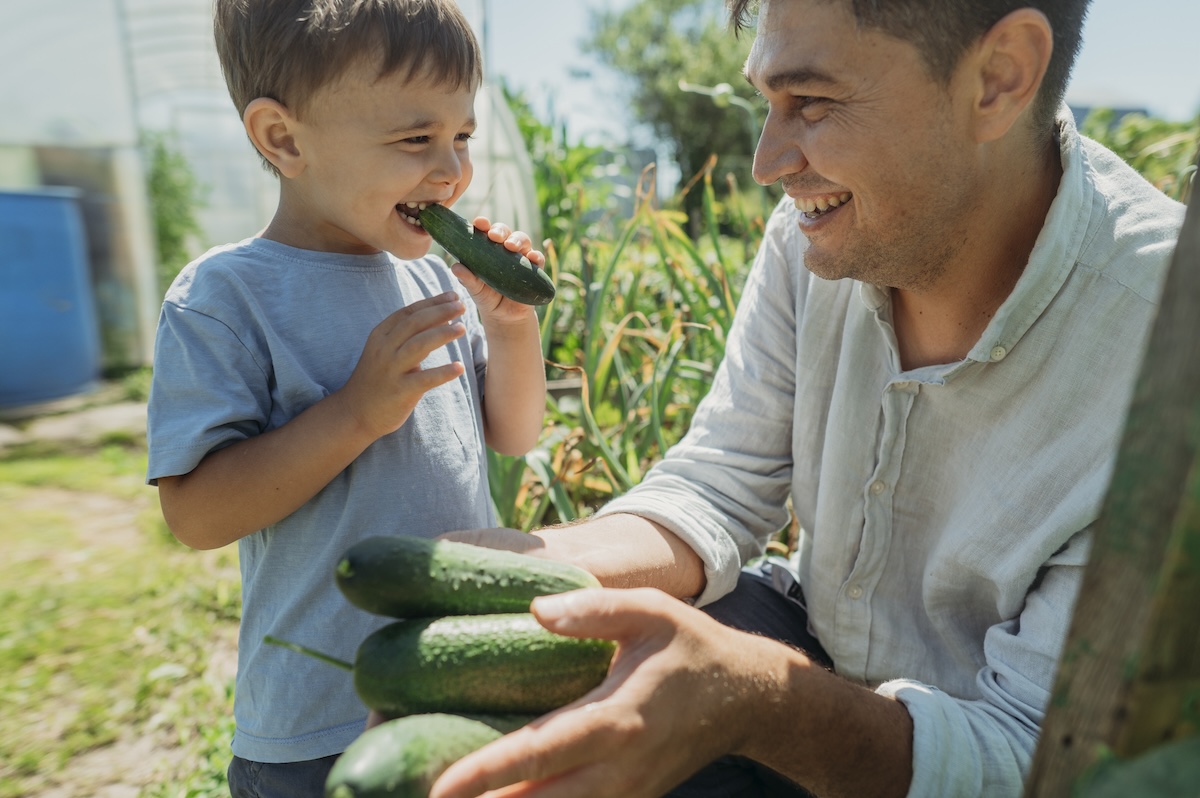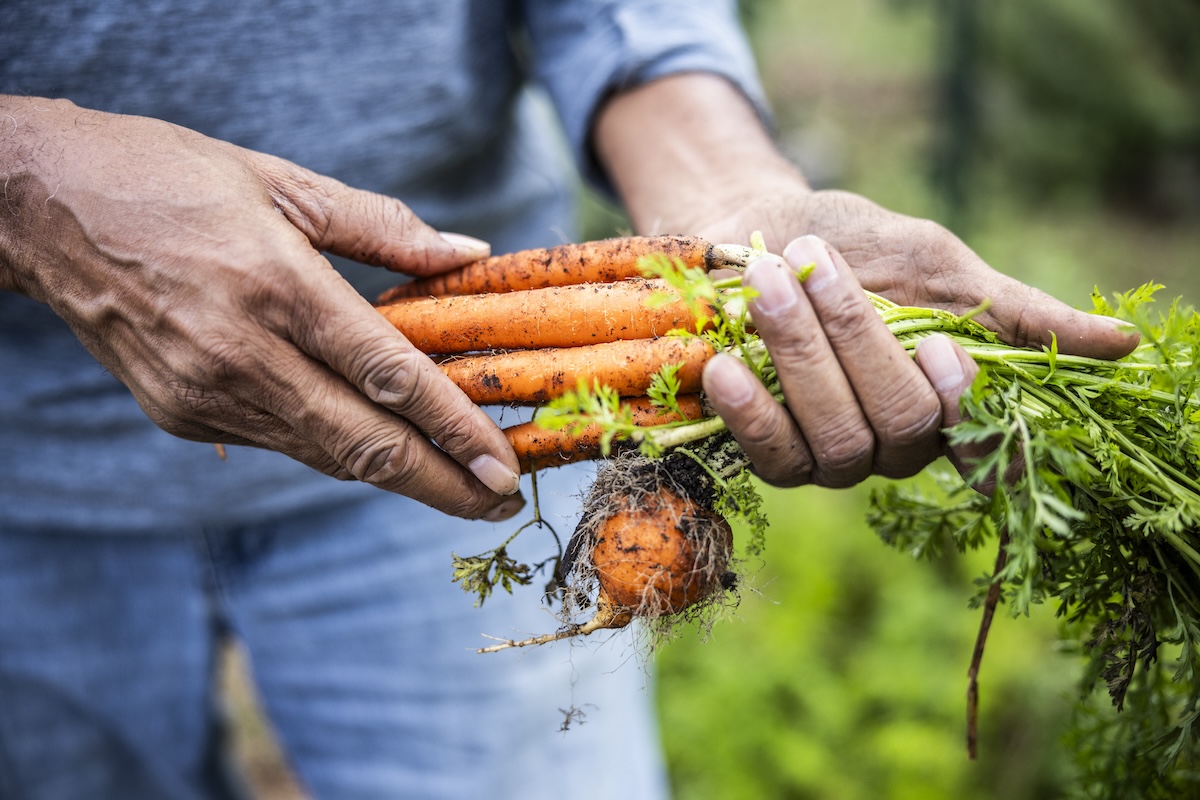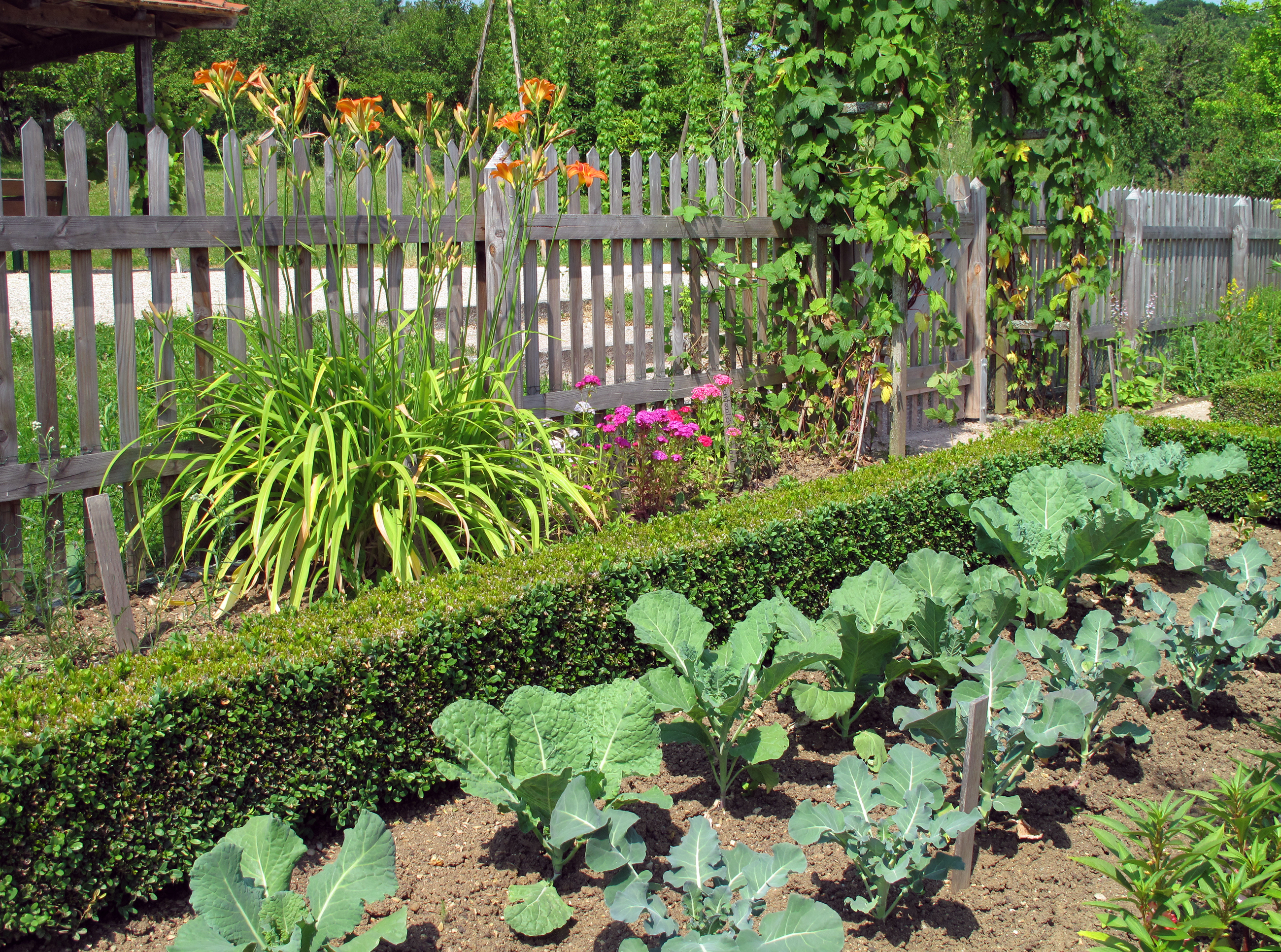

We may earn revenue from the products available on this page and participate in affiliate programs. Learn More ›
Nothing ruins a good meal more than getting sick from it afterward, especially if it’s from healthy food you grew in your own garden. Nearly half of food illnesses in the United States are due to contaminated produce. The latest outbreak to make headlines involved Salmonella infections traced to cucumbers harvested in South Florida. The Food and Drug Administration (FDA) and the Centers for Disease Control and Prevention (CDC) reported that about 550 people became ill in 34 states and the District of Columbia, adding that it is likely many more were infected but didn’t seek medical attention or report it.
In fact, CDC estimates that 48 million people get sick, 128,000 are hospitalized, and 3,000 die throughout the country from food-borne diseases each year. That is equivalent to 1 in 6 Americans impacted by tainted produce. This phenomenon is only expected to get worse with climate change. A new study just found that Salmonella contamination is enhanced by high humidity and plant disease, and climate change is predicted to increase humid periods.
Improperly grown, harvested, and stored fruits and vegetables—even at home—can result in serious illness. Learn which contaminants are most likely to impact your garden produce and how to avoid a digestive disaster.
Yes, you can get sick from the food you grow in your garden.
While food safety is often noted as the main reason people grow their own, food-borne illnesses can still be linked to homegrown produce. Sure, the odds are in your favor if you tend to a garden filled with delicious edibles, but there’s no guarantee that they will avoid contamination from bacteria, viruses, and parasites. Unfortunately, there are plenty of ways for produce to become contaminated, but when growing your own food, you can take steps to minimize the chance of this happening throughout the garden-to-table process.

Homegrown produce can be contaminated by certain bacteria.
To keep harvests safe, it’s important to understand what can affect your garden. The most common pathogens leading to food-borne illnesses include E. coli, Salmonella, and Listeria. While most contaminants appear on the outside of the produce from contact with dirt, manure, animals, or insects, they can sometimes penetrate through the skin as well and end up inside fruits and vegetables.
E. coli is present in the intestines of many species, including birds that feed on garbage or fish. This pathogen can end up in the soil from adding raw or improperly composted manure. Listeria monocytogenes is also common in soil. According to the CDC, it is one of the top five food-borne illnesses resulting in death in the United States. Outbreaks tend to be related to celery, cantaloupe, asparagus, lettuce, cauliflower, broccoli, and tomatoes.
Finally, Salmonella is also one of the top five deadliest food-borne illnesses, affecting more than 1.2 million Americans every year, often from contaminated produce. The bacteria are found in the intestines of birds, reptiles, and mammals. When consumed by humans, the bacterium can cause fever, diarrhea, and stomach cramps. For infants, children, seniors, and people with weakened immune systems, more serious illness or even death can occur.
Take steps to ensure cleanliness in and around your garden.
By following some protocols to keep tools, surfaces, and your hands clean while gardening, prepping, and storing fresh produce, you’ll help prevent food-related sickness. First, ensure good personal hygiene by washing hands thoroughly with soap and warm water before and after working in the garden; after handling compost, garbage, or plant debris; after touching a pet or animal; and following a trip to the bathroom. Use protective or disposable gloves when working with manure and compost.
Next, make sure gardening tools and harvesting containers are kept clean to prevent cross-contamination from dirty surfaces. Use clean knives if you cut produce from plants, disinfecting them with pure white vinegar or 1 tablespoon of 5.25 percent bleach in 1 gallon of water. Finally, when you hose off tools, shoes, or boots, choose an area a good distance from the garden.

Follow steps to clean and store harvested food properly.
Plastic buckets and wire mesh baskets are the best containers to keep clean. Another option is to use cardboard boxes for each type of produce; recycle or compost the cardboard afterward. Wooden crates or baskets can also be used, but designate each container for one kind of vegetable since it can be unsafe to use the same container for all produce. Disinfect containers before and after harvest.
Once the produce is harvested, it’s time to carefully wash everything with tap water to remove soil and potential contaminants. Use your hands to scrub firm produce like pears, apples, bell peppers, and tomatoes. For root vegetables and tubers, spray with water, scrub using a vegetable brush, and then rinse them under running water. It’s necessary to even wash vegetables with rinds, such as cantaloupes and watermelons, since bacteria can be transferred to the flesh when cutting the fruit open.
The final step is to store produce properly. Dry washed produce before storing it to avoid mold. Cover and refrigerate cut fruit and vegetables. Clean storage areas often and check pantries, basements, and cellars to make sure insects, rodents, and birds do not get into the food.
Ensure that garden soil remains uncontaminated.
Clean soil is essential to keeping your garden produce safe. Soil containing animal parts—such as manure, egg shells, meat, or bones—can trigger an outbreak. Avoid applying fresh, aged, or composted manure and other soil amendments containing animal products. Instead, opt for compost created from plant trimmings or grass clippings. If you prefer to use manure, be sure to purchase commercially composted and stabilized products.
Choose the safest water for irrigation.
The type of irrigation system you use in your garden can also play a role in bacteria growth. Never irrigate your garden using surface water from ponds, streams, or lakes, since E. coli and Salmonella are commonly found in water accessed by wildlife. Instead, only use drinking water treated by your local municipality or well water that is tested regularly. The safest option is to use drip irrigation because that way there is no direct contact with the edible portion of the fruits and vegetables.

Prevent animals from bringing germs into your garden.
Both pets and wildlife can wreak havoc on your garden since their feces can carry pathogens that cause food-borne illness if it comes in contact with the plants growing in the garden. Do what you can to discourage animals from entering the garden and getting into the compost pile. Since birds can carry Salmonella, Listeria, and E. coli, place birdhouses, feeders, and baths away from the garden.
Install fencing around vegetable gardens and use deterrents like scarecrows, scent-based repellents, noise makers, and faux predators. Finally, keep rodents away by tightly securing garbage can lids and using an enclosed composting system rather than an open pile.
